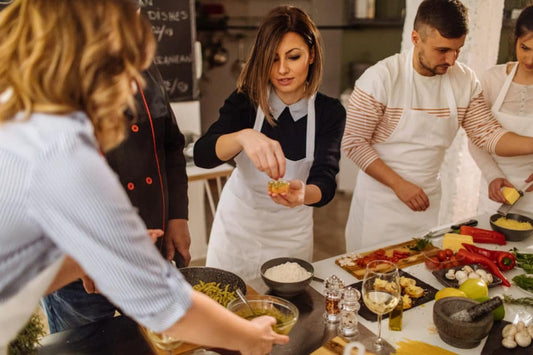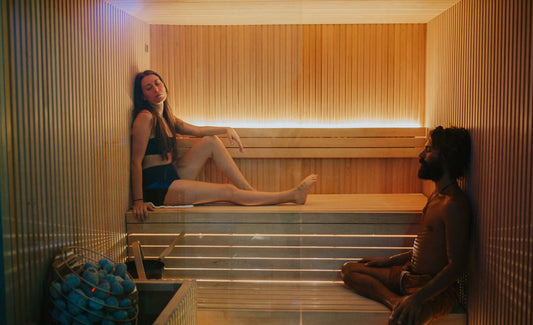
Attending a baking class can be an exciting and enriching experience. Whether you're a novice or a seasoned baker looking to refine your skills, the right attire can make a significant difference in your comfort and performance. In this article, we’ll explore the ideal clothing and accessories to wear for a baking class, ensuring you’re prepared to roll up your sleeves and get started.
The Importance of Appropriate Attire
Wearing the right clothing to a baking class goes beyond just looking good. It can enhance your experience by keeping you comfortable and safe while you work with various ingredients and equipment. Here’s why appropriate attire matters:
- Safety: Certain fabrics and accessories can pose hazards in a kitchen environment.
- Comfort: Baking can be a hands-on, sometimes messy endeavor. You’ll want clothing that allows you to move freely.
- Professionalism: If you’re attending a formal class or workshop, looking the part can add to your confidence.
Choosing the Right Clothing
Comfortable Tops
When selecting a top, comfort and functionality should be your top priorities. Here are some options:
- Cotton or Blended Fabrics: A lightweight, breathable cotton shirt or a cotton-blend top is ideal. These fabrics allow you to stay cool while working in a warm kitchen.
- Long Sleeves vs. Short Sleeves: Long sleeves can protect your arms from burns and spills, but short sleeves offer more freedom of movement. Consider your comfort level and the class environment.
- Fitted vs. Loose: A fitted top can help prevent it from getting caught on any equipment, while a looser fit offers more airflow. Strike a balance that feels right for you.
Practical Bottoms
Your choice of bottoms should allow for easy movement and protection against spills.
- Aprons: Wearing an apron can help shield your clothing from flour, sugar, and other baking ingredients. Opt for a full apron that covers your front and ties securely around your waist.
- Pants: Comfortable, durable pants are essential. Consider wearing jeans, khakis, or any non-restrictive trousers. Avoid skirts or dresses that might hinder your movement.
- Shorts: If the class is during warmer months and you prefer shorts, choose a pair that fits well and isn’t too loose.
Footwear: Choosing the Right Shoes
Your footwear is just as crucial as your clothing. Here’s what to consider:
- Closed-Toe Shoes: Always opt for closed-toe shoes to protect your feet from spills and dropped items. Sneakers or clogs are great choices.
- Non-Slip Soles: Look for shoes with non-slip soles to prevent accidents on potentially wet or flour-dusted floors.
- Comfort is Key: Since you may be on your feet for long periods, ensure your shoes are comfortable and provide adequate support.

Accessories to Consider
Hair Restraints
Keeping your hair out of the way is essential for hygiene and safety. Here are some options:
- Hair Ties or Clips: If you have long hair, tie it back securely with a hair tie or clip.
- Headbands or Bandanas: These can help keep shorter hair in place while adding a bit of flair to your outfit.
- Hair Nets: In some professional settings, a hair net may be required to maintain cleanliness.
Aprons: A Key Component
An apron is not just a fashion accessory; it serves multiple functions:
- Protection: An apron protects your clothes from stains and spills.
- Storage: Many aprons come with pockets, which are perfect for holding utensils, recipe cards, or your phone.
- Personal Style: Choose an apron that reflects your personality—there are countless styles available, from classic to quirky.
Jewelry and Accessories
While it may be tempting to wear your favorite jewelry, consider the following:
- Minimal Jewelry: If you choose to wear jewelry, keep it minimal to avoid interference while baking.
- Avoid Dangly Items: Long earrings, bracelets, or necklaces can be hazardous in a kitchen environment.
Layering for Comfort
Consider the Temperature
Baking classes can vary in temperature, depending on the kitchen and the time of year. Here are some tips for layering:
- Light Sweaters or Cardigans: Bring a lightweight sweater or cardigan that you can easily remove if you get too warm.
- Base Layers: If the class is held in a particularly chilly environment, consider wearing a fitted base layer under your top for added warmth.
The Role of Texture
When layering, consider the textures of your fabrics. Avoid materials that can easily snag or catch on equipment, as well as those that can trap heat and make you uncomfortable.
Practical Tips for Preparation
Check the Class Requirements
Before the class, check if there are any specific requirements regarding attire. Some classes may have guidelines for what to wear or provide aprons and hats.
Bring a Tote Bag
Having a tote bag or backpack can be helpful for carrying your baking supplies, recipes, and any personal items you may need during class.
Arrive Prepared
Make sure to arrive with your attire cleaned and pressed, ready to make a great impression.
Staying Organized During Class
Use Your Apron Wisely
As you start baking, utilize your apron pockets for small tools and utensils, keeping your workspace organized and efficient.
Keep a Towel Handy
Having a clean kitchen towel can be beneficial. It can be used for drying hands, wiping surfaces, or handling hot pans.
Conclusion
Choosing the right outfit for a baking class is essential for ensuring comfort, safety, and enjoyment. By considering the importance of appropriate attire, selecting the right clothing, footwear, and accessories, and being prepared, you can focus on what really matters: learning the art of baking.
So next time you sign up for a baking class, remember to dress wisely—your future culinary creations will thank you!


